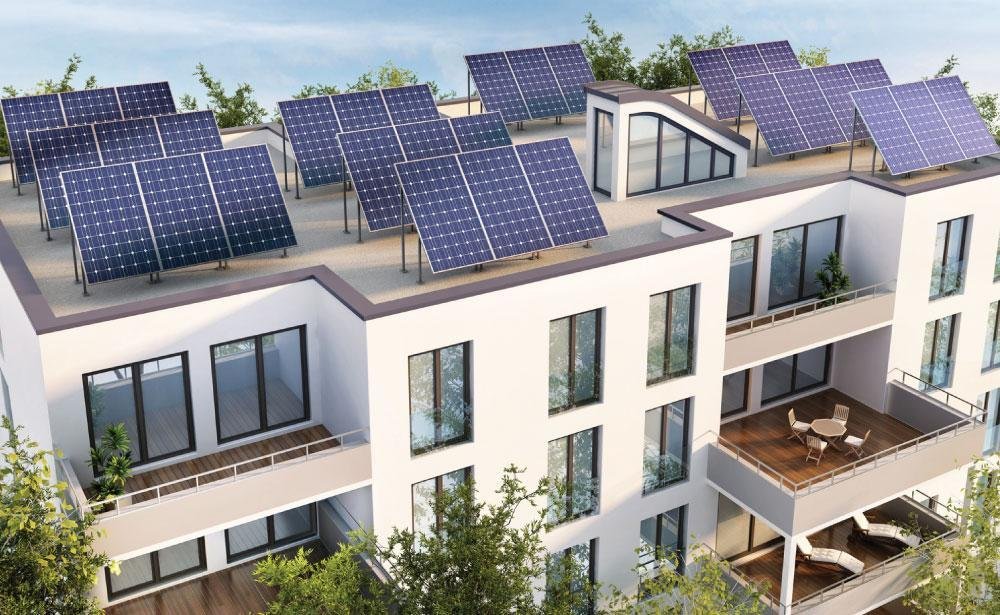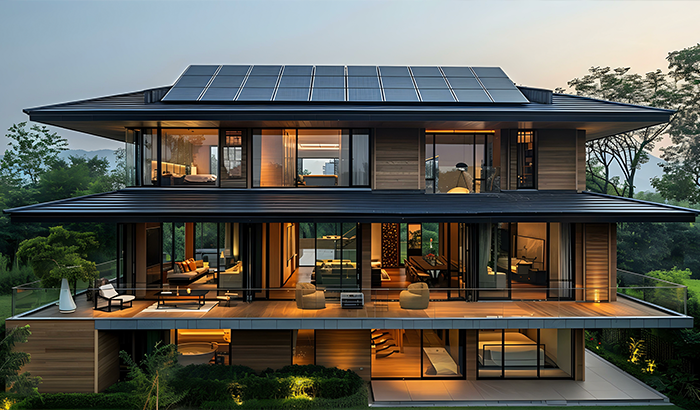Solar architecture: Harnessing renewable energy in building design
Solar architecture is a forward-thinking approach that incorporates solar energy technologies into building design to create energy-efficient and environmentally sustainable structures. By harnessing the power of the sun, architects and builders can reduce energy consumption, lower carbon footprints, and promote a greener future. Here’s an in-depth look at the principles and benefits of solar architecture.
1. Understanding Solar Architecture
Definition:
- Concept: Solar architecture integrates solar energy technologies into the design and construction of buildings to optimize energy use and reduce reliance on non-renewable energy sources.
- Objective: The primary goal is to create buildings that generate and use solar energy efficiently, enhancing sustainability and reducing environmental impact.
2. Principles of Solar Architecture
Passive Solar Design:
- Orientation: Positioning buildings to maximize solar exposure, especially during the winter months, to capture and store heat.
- Thermal Mass: Using materials with high thermal mass, such as concrete or stone, to absorb and retain heat during the day and release it at night.
- Insulation and Glazing: Installing high-quality insulation and energy-efficient windows to minimize heat loss and enhance solar gain.
Active Solar Systems:
- Photovoltaic (PV) Panels: Installing solar panels on rooftops or facades to convert sunlight into electricity.
- Solar Thermal Systems: Using solar collectors to heat water or air for domestic use or space heating.
3. Benefits of Solar Architecture

Environmental Benefits:
- Reduced Carbon Emissions: By generating clean energy, solar architecture significantly reduces greenhouse gas emissions.
- Sustainable Resource Use: Solar energy is a renewable resource, reducing dependence on fossil fuels and promoting energy security.
Economic Benefits:
- Energy Cost Savings: Solar-powered buildings can generate their own electricity, leading to substantial savings on energy bills.
- Increased Property Value: Buildings with integrated solar technologies often have higher market values and appeal to environmentally conscious buyers.
4. Innovative Solar Technologies
Building-Integrated Photovoltaics (BIPV):
- Aesthetic Integration: BIPV systems integrate solar panels seamlessly into building materials such as roofs, facades, and windows.
- Dual Functionality: These systems serve both as building components and energy generators, optimizing space and aesthetics.
Solar Shading and Louvers:
- Dynamic Shading: Adjustable solar shading devices and louvers control sunlight penetration, reducing cooling loads and enhancing comfort.
- Energy Harvesting: Some shading systems are equipped with PV cells to generate electricity while providing shade.
5. Case Studies and Real-World Examples
Exemplary Projects:
- The Edge, Amsterdam: A highly sustainable office building with integrated PV panels, energy-efficient systems, and smart technologies.
- Solar Decathlon Houses: Innovative solar-powered homes designed by university teams for the U.S. Department of Energy’s Solar Decathlon competition.
6. Challenges and Considerations
Initial Costs:
- Investment: The upfront cost of solar technologies can be high, but long-term savings and incentives often offset initial expenses.
- Maintenance: Regular maintenance and monitoring are necessary to ensure optimal performance and longevity of solar systems.
Design Integration:
- Architectural Harmony: Integrating solar technologies into building design requires careful planning to maintain aesthetic appeal and functionality.
- Local Climate: The effectiveness of solar architecture depends on local climate conditions, including sunlight availability and weather patterns.
7. Future Trends in Solar Architecture
Smart Solar Systems:
- IoT Integration: Integrating solar systems with the Internet of Things (IoT) for real-time monitoring and optimization of energy use.
- Energy Storage: Advancements in battery storage technology allow for better utilization of solar energy, even when the sun isn’t shining.
Policy and Incentives:
- Government Support: Policies, subsidies, and incentives for solar energy adoption can drive the growth of solar architecture.
- Building Codes: Updating building codes and standards to promote the integration of solar technologies in new and existing structures.
Conclusion
Solar architecture represents a sustainable and innovative approach to building design, harnessing the power of the sun to create energy-efficient and environmentally responsible structures. By integrating passive and active solar technologies, architects and builders can reduce energy consumption, lower carbon emissions, and contribute to a greener future. As technology advances and awareness of environmental issues grows, solar architecture will play an increasingly important role in shaping the built environment.



